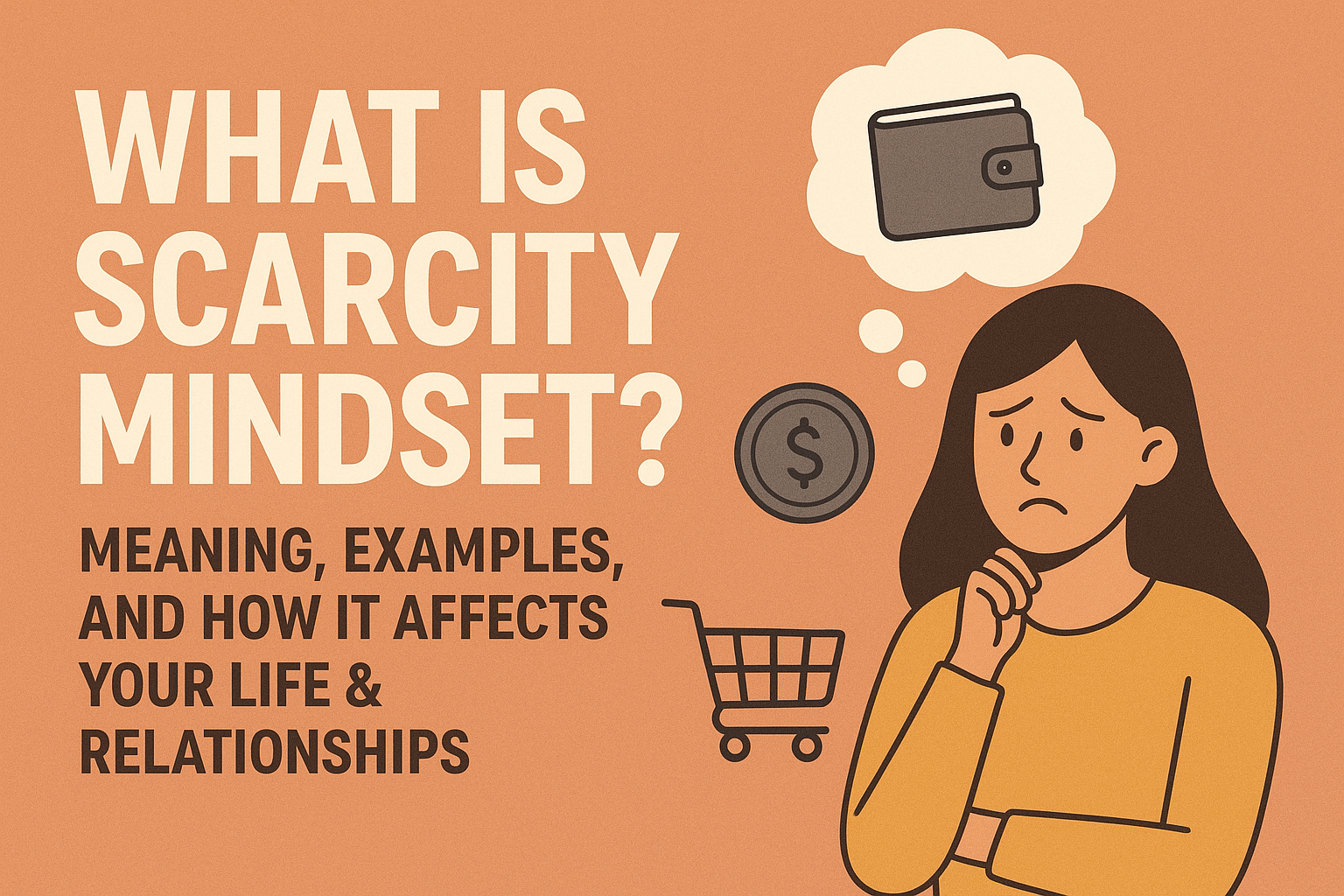What is Scarcity Mindset? Meaning, Examples, and How It Affects Your Life & Relationships
In today’s fast-paced world, we often hear terms like growth mindset, abundance mindset, and scarcity mindset. Among these, the scarcity mindset plays a huge role in shaping how we think, act, and build relationships. But what exactly is it? Why do so many people struggle with it, and how can it affect areas like dating, love, and even your career?
This guide will break down the meaning of scarcity mindset, give you real-life examples, explain why you might have it, and explore how it impacts relationships and dating.
What is Scarcity Mindset?
A scarcity mindset is the belief that there will “never be enough.” It’s the fear of losing resources, opportunities, or people. When you operate with this mindset, you focus on what you don’t have instead of what you do have.
For example:
- Constantly worrying about money even when you’re financially stable.
- Believing there aren’t enough good partners out there.
- Thinking you don’t have enough time, talent, or opportunities compared to others.
In short, scarcity mindset makes you operate from a place of fear and lack, while its opposite – the abundance mindset – helps you act with trust and confidence.
Examples of Scarcity Mindset in Daily Life
Here are some common situations where a scarcity mindset shows up:
- Money & Career
- “If I spend now, I won’t have anything left.”
- “There aren’t enough good jobs for people like me.”
- Friendships & Relationships
- “If I lose this person, I’ll never find someone else.”
- “I need to hold on tightly, or they’ll leave me.”
- Personal Growth
- “I’m not smart enough to achieve that.”
- “Others are already ahead of me, so what’s the point?”
Why Do I Have a Scarcity Mindset?
Scarcity mindset usually comes from past experiences, upbringing, or environment. Some possible reasons include:
- Childhood environment: Growing up where money, attention, or love felt limited.
- Comparison culture: Social media constantly showing people who appear to have “more.”
- Fear of rejection or failure: Believing opportunities are so rare that losing one means the end.
- Negative self-beliefs: Thinking you’re not worthy of abundance.
Scarcity Mindset in Relationships
Relationships are one of the areas most affected by scarcity thinking. Some signs include:
- Clinginess: Feeling the need to hold on tightly to your partner out of fear they’ll leave.
- Jealousy: Believing someone else can easily “take” your partner because love is limited.
- Low standards: Settling for less because you think “this is the best I can get.”
- Fear of speaking up: Avoiding difficult conversations because you’re scared it might end the relationship.
This mindset often leads to unhealthy dynamics because you’re operating from fear of loss instead of confidence in love.
Scarcity Mindset in Dating
Dating can feel overwhelming when you’re stuck in scarcity thinking. Common patterns include:
- Rushing into relationships out of fear you won’t find anyone else.
- Overanalyzing messages and interactions, worrying about being ghosted.
- Accepting red flags because you believe good partners are rare.
- Competing instead of connecting, thinking others are “winning” if they find love before you.
When you see dating as a race with limited options, it leads to stress, anxiety, and poor decisions.
How to Overcome Scarcity Mindset
Shifting from scarcity to abundance takes time, but it’s possible. Some strategies include:
- Gratitude practice – Focus daily on what you already have.
- Reframe thoughts – Replace “there aren’t enough” with “opportunities are everywhere.”
- Build self-worth – Remind yourself that you are deserving of love, success, and happiness.
- Limit comparison – Reduce social media scrolling and external validation.
- Invest in growth – Read, learn, and surround yourself with people who think abundantly.
Final Thoughts
The scarcity mindset is more than just worrying—it’s a belief system that limits your opportunities in life, relationships, and dating. Recognizing it is the first step toward change. By shifting to an abundance mindset, you open yourself to healthier relationships, better career growth, and a more fulfilling life.
Remember: There’s always enough love, success, and opportunity when you choose to see the world through abundance.








